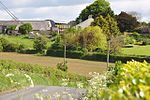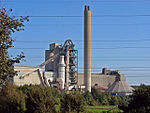Fonmon
Hamlets in WalesVillages in the Vale of Glamorgan

Fonmon (Welsh: Ffwl-y-mwn) is a hamlet in the Vale of Glamorgan in south Wales. It lies just off the B4265 road to the northwest of Font-y-Gary and Rhoose on the western side of Cardiff Airport. The hamlet is best known for its central duck pond and Fonmon Castle, a historical house located on the otherside of the B4265 road to the north. The largest house in the hamlet is called The Gables, accessed off a drive on the left approaching Fonmon from the north. A number of the houses in the area are thatched roofed.
Excerpt from the Wikipedia article Fonmon (License: CC BY-SA 3.0, Authors, Images).Fonmon
Fonmon Road,
Geographical coordinates (GPS) Address Nearby Places Show on map
Geographical coordinates (GPS)
| Latitude | Longitude |
|---|---|
| N 51.399779 ° | E -3.369596 ° |
Address
Fonmon Road
Fonmon Road
CF62 3DZ , Rhoose
Wales, United Kingdom
Open on Google Maps









